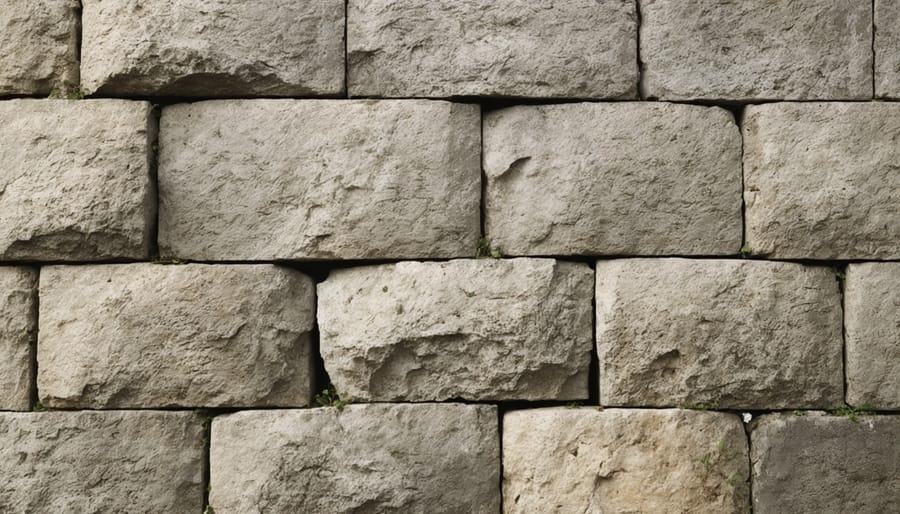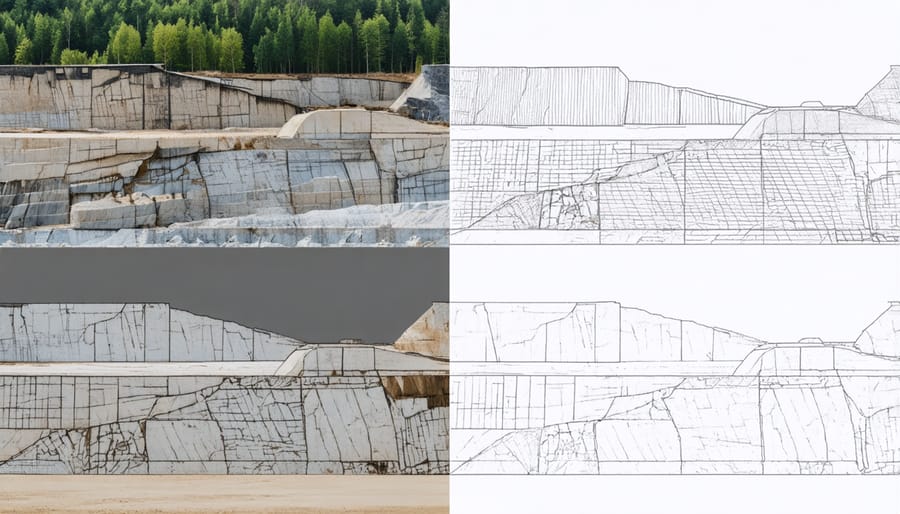Sustainable luxury represents the perfect fusion of opulence and environmental stewardship – a revolutionary approach transforming how we define premium living. Today’s discerning consumers demand more than just aesthetic excellence; they seek products and experiences that honor both artisanal craftsmanship and ecological responsibility. From reclaimed marble in boutique hotels to vintage hardwoods in modern penthouses, sustainable luxury materials tell compelling stories while preserving precious resources.
The movement transcends mere trend status, establishing itself as a fundamental shift in how we approach high-end design and consumption. By reimagining luxury through a sustainable lens, innovative designers and architects are proving that environmental consciousness enhances rather than compromises exclusivity. Each carefully sourced antique stone slab or restored architectural element brings unique character and historical depth impossible to replicate in newly manufactured materials.
This evolution in luxury goes beyond materials alone, encompassing ethical production practices, transparent supply chains, and a deep commitment to environmental stewardship. Forward-thinking brands are discovering that sustainability actually amplifies the exclusivity and desirability of their offerings, creating meaningful connections with increasingly eco-conscious affluent consumers who refuse to choose between elegance and environmental responsibility.
The Timeless Appeal of Reclaimed Stone
Character and Patina
Unlike mass-produced materials, reclaimed stone tells a story through its weathered surfaces and unique imperfections. These natural marks of time create a rich patina that new materials simply cannot replicate. Each scratch, wear pattern, and subtle color variation contributes to what designers call “character marks” – authentic details that make each piece uniquely valuable.
In contemporary design, even minimalist stone applications benefit from the depth and sophistication that aged stone provides. The subtle textures and time-worn surfaces create visual interest while maintaining architectural sophistication. This natural aging process actually enhances the stone’s aesthetic value over time, unlike synthetic materials that typically deteriorate and lose appeal as they age.
Historical buildings showcasing centuries-old stone demonstrate how these materials develop a dignified presence that new materials can’t achieve. The patina becomes a mark of authenticity and luxury, proving that sustainability and high-end design are natural partners in creating spaces with genuine character and lasting appeal.

Historical Significance
Each reclaimed stone tells a unique story, carrying with it centuries of architectural heritage and human craftsmanship. These materials often originate from historic buildings, ancient ruins, or demolished structures that once stood as testaments to past civilizations. The weathered surfaces and patina that develop over decades or centuries create character that simply cannot be replicated in newly quarried stone.
Many prestigious historical buildings across Europe and North America have incorporated reclaimed stone, from medieval castles to Victorian mansions. These stones have witnessed countless historical events and architectural transitions, making them not just building materials but artifacts of cultural significance. The practice of stone reclamation dates back to ancient Rome, where materials from older structures were regularly repurposed in new construction projects.
Today, reclaimed stone represents a bridge between historical preservation and modern sustainable luxury. When integrated into contemporary designs, these materials create a powerful connection to the past while supporting environmental conservation. Each piece brings authenticity and storytelling potential that resonates deeply with those who value both heritage and sustainability.
Environmental Benefits of Choosing Reclaimed Stone

Reduced Carbon Footprint
Using reclaimed stone in luxury construction and design projects significantly reduces environmental impact through multiple channels. By repurposing existing stone materials, this approach eliminates the need for new quarrying operations, which typically involve heavy machinery, fuel consumption, and landscape disruption. The process of extracting virgin stone can release substantial amounts of CO2 into the atmosphere, whereas reclaimed stone requires minimal processing and transportation.
When comparing carbon footprints, reclaimed stone typically generates 80% less carbon emissions than newly quarried material. This reduction comes primarily from avoiding extraction processes and minimizing transportation distances, as most reclaimed stone is sourced locally from demolished structures or abandoned buildings.
The environmental benefits extend beyond carbon reduction. Reclaimed stone prevents valuable materials from entering landfills and preserves natural resources for future generations. Each square foot of reclaimed stone used saves approximately 400 pounds of mining waste and reduces water consumption associated with new stone processing.
Modern salvage techniques have become increasingly sophisticated, allowing for careful extraction and cleaning of historical stone while maintaining its structural integrity. This preservation process requires less energy than manufacturing new stone products and often results in materials with superior weathering characteristics due to their natural aging process.
The growing availability of reclaimed stone through established salvage networks has made it an increasingly viable option for sustainable luxury projects, offering both environmental benefits and unique architectural character.
Resource Conservation
Choosing reclaimed stone over newly quarried materials delivers significant environmental benefits while maintaining the luxurious aesthetic desired in high-end projects. By reusing existing stone, we eliminate the need for new quarrying operations, which typically involve extensive energy consumption, heavy machinery usage, and substantial CO2 emissions. The extraction process alone can disturb local ecosystems and alter landscapes permanently.
Processing newly quarried stone requires additional energy for cutting, finishing, and transportation. Each step contributes to the material’s carbon footprint, from the electricity needed to run processing equipment to the fuel consumed in shipping heavy stone products across long distances. By contrast, reclaimed stone often requires minimal reprocessing, particularly when architectural elements are preserved in their original form.
Water conservation is another crucial benefit. New stone processing consumes substantial amounts of water for cutting, cooling, and finishing operations. Conservative estimates suggest that processing one cubic meter of new stone can use up to 2,000 liters of water. Reclaimed stone significantly reduces this water demand, as most pieces only require cleaning and minor refinishing.
The preservation of natural resources extends beyond the stone itself. By choosing reclaimed materials, we help protect undisturbed landscapes, maintain wildlife habitats, and conserve the finite supply of premium stone varieties, some of which are becoming increasingly rare in their natural deposits.
Applications in Modern Design
Interior Features
Reclaimed stone stands at the forefront of natural stone in interior design, offering a perfect fusion of luxury aesthetics and environmental consciousness. These heritage materials, carefully salvaged from historic buildings, old quarries, and architectural remnants, bring unmatched character and authenticity to modern spaces.
When incorporated into flooring, reclaimed stone creates a sophisticated foundation that tells a story through its weathered patina and unique wear patterns. Limestone and marble recovered from European châteaux or Mediterranean villas introduce Old World elegance, while local fieldstone adds regional authenticity. Following current modern stone design trends, designers often mix different reclaimed stone varieties to create distinctive patterns and visual interest.
Wall applications showcase the versatile beauty of reclaimed stone, from full accent walls to decorative trim work. The natural variations in color and texture create depth and visual interest impossible to replicate with new materials. Architectural elements like salvaged stone mantels, columns, and archways serve as stunning focal points while preserving historically significant pieces.
The sustainability aspect of reclaimed stone extends beyond material conservation. These elements typically require minimal processing compared to newly quarried stone, reducing energy consumption and carbon footprint. Additionally, reclaimed stone often exhibits superior durability, having already proven its resilience through decades or centuries of use. This combination of environmental benefits and proven longevity makes reclaimed stone an intelligent investment for luxury interiors focused on both aesthetics and sustainability.

Exterior Applications
The exterior application of reclaimed stone creates a stunning first impression while embodying sustainable luxury at its finest. When incorporated into landscaping, these materials establish a seamless connection between built structures and natural surroundings, following biophilic design principles that enhance both aesthetic appeal and environmental harmony.
Facade applications of reclaimed stone make particularly powerful statements, offering unique patinas and weathering patterns that new materials simply cannot replicate. These distinctive characteristics tell a story of time and heritage, while the varying textures and natural color variations create dynamic visual interest that evolves throughout the day as light conditions change.
In outdoor living spaces, reclaimed stone proves exceptionally versatile. From elegant terraces and pathways to robust retaining walls and water features, these materials bring authenticity and character to every application. The durability of natural stone ensures these exterior features will withstand decades of exposure to the elements, actually improving in appearance as they age.
Sustainable landscaping with reclaimed stone often incorporates permeable designs that manage water runoff naturally. When combined with native plantings, these installations create eco-friendly environments that require minimal maintenance while providing maximum visual impact. The thermal mass properties of stone also help regulate outdoor temperature fluctuations, creating more comfortable gathering spaces and reducing the urban heat island effect in larger installations.
Sourcing and Selection Guide
Quality Assessment
Evaluating reclaimed stone requires a systematic approach to ensure its suitability for luxury applications. Begin with a thorough visual inspection, checking for signs of weathering, cracks, or structural damage. The stone’s surface should maintain its original character while being free from significant deterioration that could compromise its integrity.
Physical testing is crucial for determining the stone’s strength and durability. Perform simple tap tests to identify hollow spots or internal fractures, and assess the material’s density by comparing it to known standards. Pay special attention to edges and corners, as these areas often reveal the most about a stone’s condition.
Consider the stone’s previous exposure to environmental conditions and chemical treatments. Request documentation about its origin and previous applications when available. This history can provide valuable insights into potential long-term performance issues.
Moisture content and absorption rates are particularly important factors. Test samples by applying water to various surfaces to evaluate porosity and potential staining risks. For structural applications, professional laboratory testing may be necessary to verify load-bearing capabilities.
Color consistency and patina should be evaluated under different lighting conditions. While some variation is expected and often desirable in reclaimed materials, extreme inconsistencies might affect the final aesthetic appeal. Document any unique markings or historical features that could add value to the final installation.
Remember that minor imperfections often contribute to reclaimed stone’s authentic character, but structural integrity should never be compromised for aesthetic appeal.
Reliable Sources
Finding reliable suppliers of reclaimed stone is crucial for ensuring both quality and authenticity in sustainable luxury projects. The Architectural Salvage Network (ASN) maintains a comprehensive directory of verified suppliers across North America, with each member undergoing rigorous quality control assessments.
Established stone yards with dedicated reclamation divisions, such as Historic Stone Company and Heritage Salvage, offer detailed documentation of their materials’ origins and processing methods. These suppliers typically provide both raw blocks and finished pieces, along with certification of authenticity and structural integrity reports.
European sources, particularly those in Italy and France, are renowned for their extensive inventories of historic marble and limestone. Companies like Compagnie des Pierres Anciennes and Stone Age Reclamation specialize in sourcing materials from centuries-old buildings and estates.
For project-specific requirements, working with architectural salvage consultants can help locate exactly what you need. These professionals maintain extensive networks and can often source rare or specific materials through their connections.
When evaluating potential suppliers, look for:
– Detailed material documentation
– Structural integrity certifications
– Sustainable processing practices
– Member affiliations with recognized industry organizations
– Portfolio of completed projects
– References from architects and designers
Always request samples and documentation before making significant purchases, and consider visiting the supplier’s yard to inspect larger quantities in person.
As we look to the future of sustainable luxury in design and construction, reclaimed stone stands as a testament to how traditional materials can meet contemporary demands for both opulence and environmental responsibility. This time-honored material not only carries the patina of history but also represents a forward-thinking approach to luxury construction that prioritizes our planet’s resources.
The growing adoption of reclaimed stone by leading architects and designers signals a significant shift in how we define luxury. Rather than viewing sustainability and opulence as opposing forces, the industry now recognizes that true luxury lies in the thoughtful preservation and repurposing of our most precious materials. Each piece of reclaimed stone tells a unique story while contributing to a more sustainable future.
The versatility and durability of reclaimed stone ensure its place in tomorrow’s sustainable design landscape. As resources become increasingly scarce, the value of these materials will only appreciate, making them not just an environmentally conscious choice but a wise investment. The combination of historical significance, environmental benefits, and timeless beauty positions reclaimed stone as an exemplar of sustainable luxury that will continue to shape architectural excellence for generations to come.
Looking ahead, we can expect to see even more innovative applications of reclaimed stone as technology advances and creative possibilities expand. This marriage of heritage and sustainability represents more than just a trend – it’s a fundamental shift in how we approach luxury design and construction.










